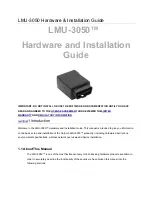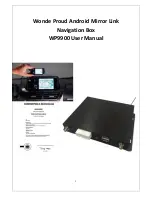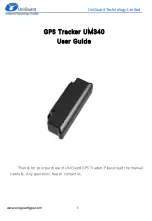
4.5. *EVENT MACHINE
4.5
*Event Machine
The unit’s reporting is controlled by an
Event Machine
which constantly
(*)Essential configuration
evaluates user defined events. These events allow the user to create a re-
porting schema and functionality controlled by
triggers
and
actions
. Events
can be consulted or configured at any time with the
ED
message throughout
the TAIP console, enabling the user to alter the
Event Machine
parameters
at any time
locally
or
over the air
.
Up to 50 events may be defined on the unit. These events are evaluated
on a sequential order based on the event’s ID. This means that lower IDs
are evaluated first. Having this in mind an event’s ID may be relevant if its
trigger depends on other events’ signals and/or on other events’ user-defined
actions. The whole 50 events’ evaluation is performed at a 1 second rate.
This section examines the events’ components:
triggers
and
actions
. Then
it gives an overview of the events’ definition to complement the TAIP refer-
ence. Finally explains one of the most important components of the events’
triggers:
Signals
.
The
Event Machine
, based on user’s configuration decides what,
where and when to send a report and/or execute an action,
but
it is not all of the configuration needed by the unit.
When
the user starts configuring the
Event Machine
, it is assumed that
he has already defined the
Destination Addresses
an their corre-
sponding
Destination Points
as described on the previous sections
of this chapter. Enabling the unit on the GSM/GPRS network is
also required.
Note:
4.5.1
Triggers
A trigger is determinated with the
logical combination
of several situations
(also called signals). A
logical combination
is basically an equation (specifi-
cally: a boolean equation) that combines signals (situations) with the logical
operators
AND
,
OR
and
NOT
.
Combining situations with operators:
Example
A vehicle going at or over
60mph
is a situation, let’s call it situation
S
.
This situation may be
true
or may be
false
, there are no other possibilities.
These kind of situations that can only take two possible values,
true
or
false
,
are said to be of
boolean
nature. Let’s add another
boolean
situation: A
vehicle located within some cities’ perimeter. This again is a two-value-only
situation. Let’s call it P.
How can we combine these two situations to create a third complex situation
?. We can do so with logical operators. For example, let’s create a third
situation C that is only true when the other two situations are also true.
For this we use the
AND
operator in the following form:
C = S AND P
77
Содержание Antares SB
Страница 1: ......
Страница 2: ...Antares SB TM GSM User s Manual FW 5 21 Digital Communications Technologies April 15 2008...
Страница 37: ...2 1 POWER SUPPLY 35...
Страница 38: ...2 1 POWER SUPPLY 36...
Страница 42: ...2 5 CONNECTION DIAGRAMS 40...
Страница 141: ...6 Unit s TAIP reference...
Страница 191: ...6 32 XADM DIAGNOSTIC MESSAGE 189...
Страница 228: ......
Страница 229: ......















































